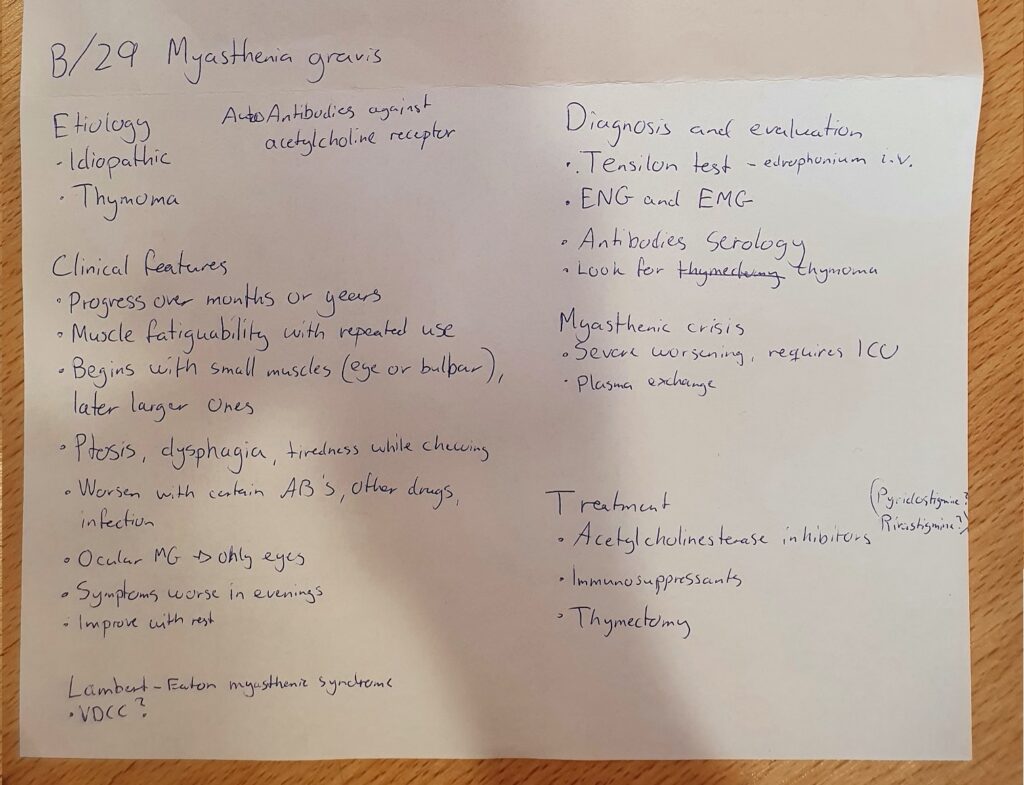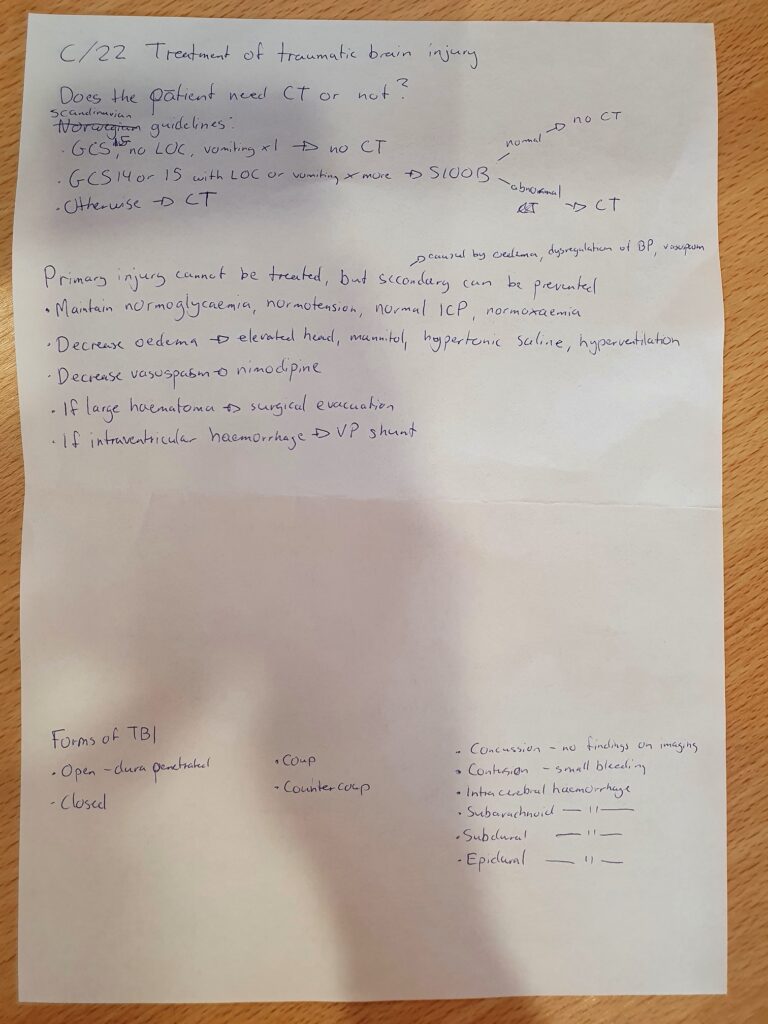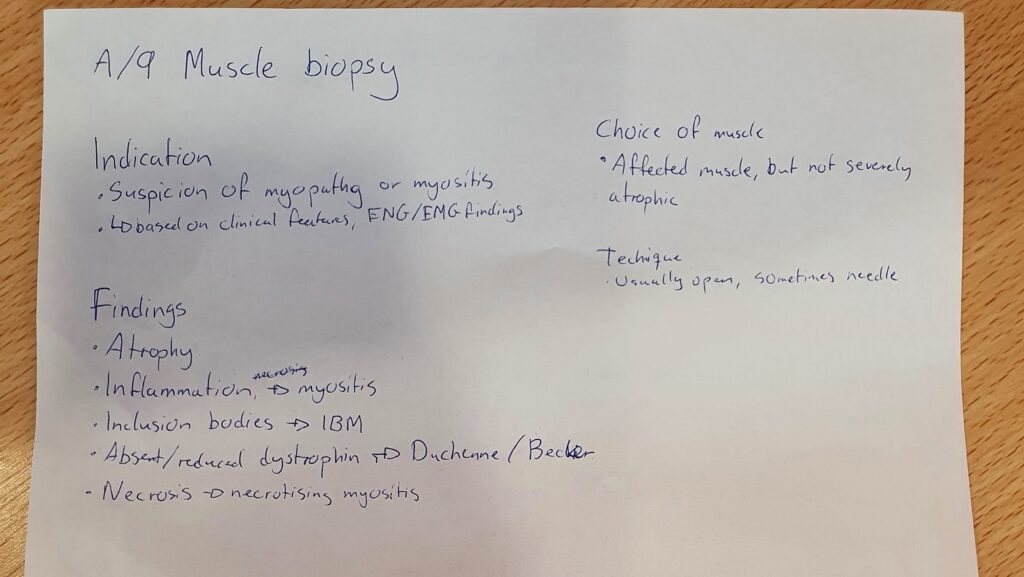So I had my neurology final yesterday. The exam was to begin at 10:30 (which sucks, I prefer having early exams). I was waiting outside the neurology department (one floor up from psychiatry) with the other students. According to Neptun, our examiner was to be prof. Janszky.
It’s 10:30. A doctor comes and guides us to the department’s “library”, quotation marks because there were zero books in there..
Practical part
She asks who of us had reflex hammers, which only I and a few other students had brought (but I’d forgotten my lab coat, so we were even). Those of us who had forgotten to bring lab coats were given disposable isolation gowns, and those who’d forgotten to bring a reflex hammer were either lent one or told to borrow from those who had one.
It’s 10:46. The doctor gives each of us a patient to examine, and tells us that we should perform a full neurological examination, and after 20 minutes, she’d return and ask what we’d found and ask a few questions.
So we do the examinations on our patients, and then we wait. The wait turns out to be more like one hour. (She had to examine four students before me, which is why it took so long.)
When she finally returns, it’s 11:38. She begins by asking me what I’d found. She then asks a few theoretical questions:
- What is intention tremor?
- Where can the lesion be if there is an intention tremor?
- How do you examine the muscle tone?
- What is rigidity and what is spasticity?
- If there is a lesion in the pyramidal tract, what kind of muscle tone can be present?
- Demonstrate Hoffman and Trömner sign
- What is the other major pyramidal sign and how do you examine it?
- What are the signs of peripheral paresis?
- Demonstrate on the patient how you would examine the visual field.
- What’s hemianopia?
- Let’s say that I had a stroke in my right hemisphere. What kind of visual field disturbance could I experience?
And that was it for the practical part. I didn’t answer all questions perfectly, but more or less, so I got 5 in the end. It took five minutes.
Theoretical part
She tells me to go back to the library to draw topics. It’s 11:45, lunch time. I draw my three topics:
- A/9: Muscle biopsy
- B/29: Myasthenia gravis
- C/22: Treatment of traumatic brain injuries
My B topic was great, C was okay, and A was not the best. I sit down to write my topics, but there are three students before me, plus the student who was currently having the exam. I knew it was going to be a long day, but I hadn’t brought food.
Time passes, but feels like it’s standing still. Each student’s exam takes like 20 minutes. The exam is happening in another room, so we have no idea how it’s going with the examinees. Hunger grows stronger and stronger. I look at the other students, and they ask me what the time is, as I had my watch. “12:30”, I say, and one student rubs their belly to signal that they’re really hungry. I know, I know. I am too.
I’m hungry, restless, and anxious as we’re sitting there waiting. Nothing is happening in the room; everyone’s is just waiting. The doctor watching over us is droodling on a piece of paper. I look outside the window, hoping to find something interesting to look at to pass the time, but the view consists of an opposing wall with flaking paint. My akathisia is getting to strong; I have to move. I get up and start walking back and fourth in the room. My watch counts 1149 steps as I keep walking to pass the time and ease my anxiety.
Finally, the last student before me returns from her exam. I look at my watch; it’s now 13:03. She walks me to prof. Janszky’s office. A nice office. The doctor who examined my practical part is present as the co-examiner. I sit down in a comfy chair, and he tell me that I can start with whichever topic I would like. Nice.
B/29 Myasthenia gravis

I began by mentioning everything I’d written down, except the part about Lambert-Eaton. I wasn’t sure if I should mention the treatment, but I did anyway and he didn’t correct me or stop me.
He asks me whether there are any other antibodies associated with MG. I forget about anti-MuSK so I mention the anti-VDCC antibodies, but he replies that they’re associated with Lambert-Eaton and not MG. I draw a complete blank on the anti-MuSK. After a while, he gives me the answer, and tells me to go to the next topic.
C/22 Treatment of traumatic brain injury

I begin with who needs a CT and who don’t. It’s probably not actually a part of the topic, but I found it interesting so I wanted to include it anyway. I open with “So I’m Norwegian, so I’ve looked at the Scandinavian guidelines” they laugh a bit and say something like “maybe they’re better”.
After explaining that, I begin by talking about how we only can treat secondary injuries and not primary, etc. etc. At some point he stops me to ask about the types of TBI. He begins with commotion (which I think is a Hungarian term for concussion), and asks me to list the others. I explain contusion, ICH, SAH, SDH, and EDH, and say that if there’s a haematoma we can drain it and if there’s bleeding in the intraventricular space, we can use a shunt. He agrees. Afterward I continue with the supportive treatments I’d listed for oedema, vasospasm, etc.
He asks me what the lucid interval is, and I answer. He asks me why we examine the eyes in TBI, and I say it’s because anisocoria could be present. He asks why anisocoria occurs, and I say herniation of the cerebral peduncles, to which he replies that it’s wrong, it’s rather uncal herniation. “In case of anisocoria, which pupil is on the side of the injury?”, to which I reply “the larger pupil”. He agrees.
He asks what another finding may be on the eyes in case of TBI. “Fixed pupil, when there’s no reaction to light”, I respond. He asks which nerve is affected in this case, and I say occulomotor. He signals for me to proceed to the last topic.
A/9 Muscle biopsy

I begin by listing what I’d written down. I don’t get further than the IBM point until he interrupts me and tells me that we’re finished and that it’s a 5. Yay! The exam took 7 – 8 minutes.
On my way out, they ask me for the three envelopes each of my topics were inside when I drew them. I had forgotten them in the library, so I had to go and get them. Awkward!
I look at my watch. It’s 13:13.
Time for lunch.